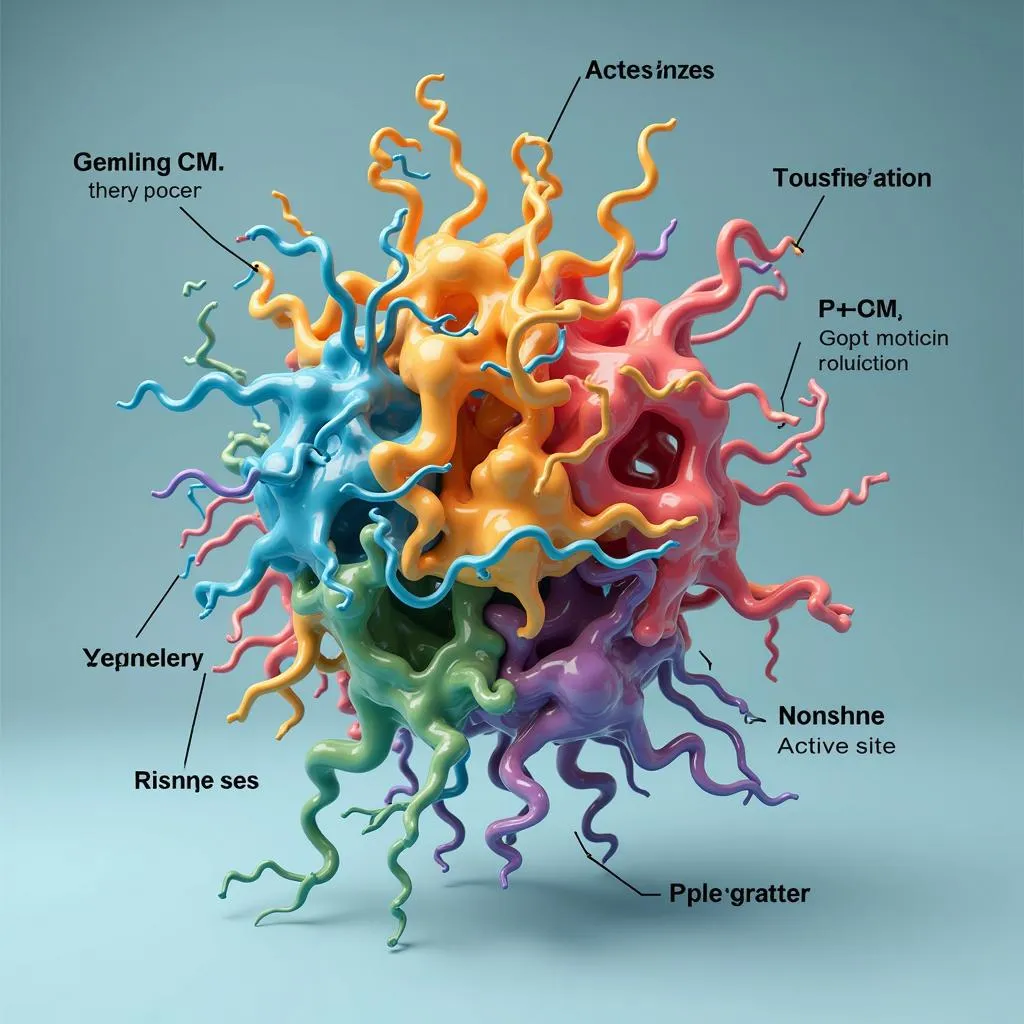The term “ASE enzyme” often pops up in scientific discussions, leaving many wondering about its meaning and significance. This article delves into the world of ASE enzymes, exploring their definition, functions, and relevance in various fields.
Understanding Enzymes and the “-ASE” Suffix
Before we decode “ASE enzyme,” it’s crucial to grasp the basics of enzymes. Enzymes are biological catalysts – remarkable molecules that accelerate chemical reactions within living organisms. They are essential for a myriad of life processes, from digestion to DNA replication.
Now, let’s unravel the mystery of the “-ASE” suffix. In biochemistry, this suffix is a telltale sign. It’s used to name enzymes based on the reactions they catalyze or the substrates they act upon.
For example, lactase is an enzyme that breaks down lactose (milk sugar), and DNA polymerase helps in synthesizing DNA molecules. Recognizing this pattern helps in understanding the roles of various enzymes.
Decoding “ASE Enzyme”: A Tautology
The term “ASE enzyme” is, in essence, a tautology. It’s like saying “enzyme enzyme.” The “-ASE” suffix already implies that we’re talking about an enzyme. So, when someone uses the phrase “ASE enzyme,” they are simply referring to any enzyme.
 Enzyme Structure
Enzyme Structure
Why the Confusion?
The use of “ASE enzyme” might stem from a lack of clarity or a misunderstanding of the nomenclature. Sometimes, individuals might use it casually without realizing the redundancy.
The Importance of Precise Terminology
While “ASE enzyme” might not be technically wrong, employing precise terminology in scientific communication is paramount. Using the correct enzyme names ensures clear and unambiguous communication among researchers, educators, and students.
Exploring the Diverse World of Enzymes
Now that we’ve cleared the air about “ASE enzyme,” let’s shift our focus to the incredible diversity and significance of enzymes in different areas:
1. Enzymes in Health and Medicine:
- Digestive enzymes: Amylase, protease, and lipase are crucial for breaking down carbohydrates, proteins, and fats, respectively.
- Metabolic enzymes: These enzymes regulate various metabolic pathways in our body, controlling energy production, detoxification, and more.
- Therapeutic enzymes: Some enzymes serve as therapeutic agents. For instance, thrombolytic enzymes like streptokinase are used to dissolve blood clots.
 Enzymes in Medicine
Enzymes in Medicine
2. Enzymes in Industry:
- Food industry: Enzymes like pectinase and cellulase play a role in fruit juice clarification and bread making.
- Detergent industry: Proteases and lipases are incorporated into detergents to break down protein and fat stains.
- Textile industry: Amylases are used in textile manufacturing for removing starch and improving fabric quality.
3. Enzymes in Research:
- Molecular biology: Restriction enzymes are indispensable tools in genetic engineering for cutting DNA at specific sequences.
- Biotechnology: Enzymes are extensively used in various biotechnological applications, from biofuel production to bioremediation.
Conclusion: Appreciating the World of Enzymes
While “ASE enzyme” might be a redundant term, it highlights the vast and crucial world of enzymes. These remarkable biocatalysts are fundamental to life and find applications in diverse fields.
Understanding enzyme nomenclature and appreciating their roles is essential for effective communication and advancements in science, medicine, and industry.
FAQs About Enzymes
1. What are enzymes made of?
Enzymes are primarily proteins, consisting of long chains of amino acids folded into complex three-dimensional structures.
2. How do enzymes work?
Enzymes work by lowering the activation energy of chemical reactions, making it easier for reactions to occur. They achieve this by binding to specific molecules called substrates at their active sites, facilitating the formation of transition states.
3. What factors affect enzyme activity?
Temperature, pH, substrate concentration, and the presence of inhibitors or activators can influence enzyme activity.
4. Can enzymes be reused?
Yes, enzymes are not consumed during reactions. They act as catalysts and can participate in multiple reaction cycles.
5. What are some examples of enzyme deficiencies?
Lactose intolerance (lactase deficiency) and phenylketonuria (phenylalanine hydroxylase deficiency) are examples of enzyme deficiencies.
If you need further assistance, please contact us at Phone Number: 0369020373, Email: [email protected] or visit our office at Thon Ngoc Lien, Hiep Hoa, Bac Giang, Vietnam. Our customer support team is available 24/7.


